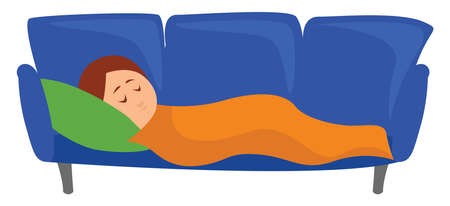1. Understanding Toddler Sleep Needs
Ensuring your toddler gets enough daytime sleep is essential for their overall health, mood, and development. But how much nap time do they really need? Understanding the recommended amount of sleep can help you establish a routine that keeps your little one well-rested and happy.
How Much Daytime Sleep Do Toddlers Need?
The amount of nap time needed varies by age. Here’s a general guideline:
| Age | Recommended Nap Time | Total Daily Sleep |
|---|---|---|
| 12-18 months | 1-2 naps (2-3 hours total) | 12-14 hours |
| 18 months – 3 years | 1 nap (1.5-3 hours) | 11-13 hours |
| 3-5 years | May still nap (0-2 hours) | 10-13 hours |
Why Naps Are Important for Toddlers
Naps do more than just prevent crankiness—they play a crucial role in your child’s growth and development. Here’s why daytime sleep matters:
- Boosts Brain Development: Napping helps toddlers process new information and improve memory.
- Enhances Mood: A well-rested toddler is less likely to have tantrums and mood swings.
- Supports Physical Growth: Sleep is essential for proper hormone production, which aids in growth and development.
- Keeps Nighttime Sleep on Track: Contrary to what some may think, skipping naps can lead to overtiredness, making it harder for toddlers to sleep at night.
Signs Your Toddler Needs More Nap Time
If youre unsure whether your little one is getting enough daytime sleep, watch for these signs:
- Irritability or frequent meltdowns in the afternoon.
- Drowsiness or falling asleep in unusual places (like during car rides).
- Trouble focusing or engaging in activities.
- Difficulties settling down for nighttime sleep due to overtiredness.
Establishing a Healthy Nap Routine
Now that you understand the importance of naps, the next step is creating a consistent routine that encourages healthy sleep habits. Stay tuned for practical tips on setting up the perfect nap schedule!
2. Common Nap Challenges and Their Causes
Toddlers are known for their unpredictable sleep habits, and nap resistance is a common struggle many parents face. Understanding why your little one refuses to nap can help you find the right solution. Below are some of the most common reasons toddlers resist naps and what you can do about them.
Overtiredness
It may seem counterintuitive, but when toddlers are overtired, they often have a harder time falling asleep. When they miss their sleep window, their bodies produce more cortisol and adrenaline, making it even tougher for them to settle down.
Signs of Overtiredness:
- Rubbing eyes frequently
- Crying or becoming extra fussy
- Sudden bursts of energy despite being tired
- Clinginess or irritability
How to Fix It:
Watch for early signs of sleepiness and adjust nap times accordingly. Try creating a calming pre-nap routine to help your toddler wind down before sleep.
Inconsistency in Schedule
Toddlers thrive on routine, and irregular naptimes can make it difficult for them to settle down. If naps happen at different times each day, their internal clocks don’t know when to expect rest.
Common Scheduling Mistakes:
- Naps happening too late in the day
- Naps skipped due to outings or activities
- An inconsistent wake-up time in the morning
How to Fix It:
Aim for a consistent nap schedule by setting regular wake-up, nap, and bedtime routines. Even on busy days, try to prioritize naps whenever possible.
Developmental Milestones
Your toddler’s brain is constantly growing, which can sometimes disrupt their usual sleep patterns. Learning new skills like walking, talking, or potty training might cause temporary nap struggles.
| Milestone | How It Affects Naps |
|---|---|
| Crawling/Walking | Your toddler may want to practice instead of sleeping. |
| Language Explosion | A busy brain makes it harder to settle down. |
| Pushing Boundaries | Your toddler may start resisting naps as part of newfound independence. |
How to Fix It:
If your toddler is skipping naps due to developmental leaps, be patient and keep offering opportunities for rest. Stick with a familiar routine, provide extra comfort if needed, and remember that these phases usually pass with time.

3. Creating the Perfect Nap Environment
Setting up a cozy and calming nap space is essential for helping your toddler get quality daytime sleep. A well-designed environment can minimize distractions and create the right atmosphere for rest. Here’s how you can optimize lighting, noise control, and comfort to ensure better naps.
Optimize Lighting for Better Sleep
Toddlers nap best in a dimly lit or dark room. Too much light can make it difficult for them to fall asleep and stay asleep. Consider these lighting tips:
- Blackout Curtains: Block out natural light to create a dark, sleep-friendly space.
- Soft Nightlight (if needed): A dim nightlight can help if your child is afraid of complete darkness.
- Avoid Blue Light Exposure: Reduce screen time at least 30 minutes before naptime to prevent melatonin disruption.
Control Noise Levels
External noises can easily disrupt your toddler’s nap. Managing sound levels can make a big difference in creating a peaceful sleep environment. Here are some ways to control noise:
| Noise Issue | Solution |
|---|---|
| Loud household sounds | Use a white noise machine or fan to mask disruptive noises. |
| Noisy neighbors or street sounds | Close windows and use heavy curtains for extra soundproofing. |
| Siblings playing nearby | Create quiet time rules during naps and set up a play area away from the nap space. |
Create a Comfortable Sleep Space
Your toddler’s nap area should be comfortable and inviting. The right bedding, temperature, and sleepwear can help them relax and settle down for restful sleep.
- Bedding: Use soft, breathable sheets and avoid heavy blankets to keep them safe and comfortable.
- Room Temperature: Keep the room between 68-72°F (20-22°C) for optimal sleep conditions.
- Comfort Items: If your child has a favorite lovey or stuffed animal (and they’re old enough), let them have it for added comfort.
A well-prepared nap environment plays a crucial role in ensuring your toddler gets the rest they need. By adjusting lighting, minimizing noise, and providing a cozy setup, you’ll create the perfect space for better daytime sleep.
4. Effective Nap Routines and Techniques
Helping your toddler get enough daytime sleep can be challenging, but establishing an effective nap routine can make a big difference. By creating consistency, recognizing sleep cues, and using gentle sleep training methods, you can help your little one settle into restful naps more easily.
Establish a Consistent Nap Routine
Toddlers thrive on routine, and having a predictable nap schedule helps their bodies recognize when its time to rest. Try to put your child down for a nap at the same time each day, even on weekends. A simple pre-nap routine—such as reading a short book, dimming the lights, and playing soft music—can signal to your toddler that its time to wind down.
Recognize Sleep Cues
Every child has unique signals that indicate they are getting sleepy. Recognizing these early signs can help prevent overtiredness, which makes it harder for them to fall asleep. Here are some common sleep cues:
| Sleep Cue | Description |
|---|---|
| Yawning | A clear sign that your toddler is ready for rest. |
| Rubbing Eyes | Your child may rub their eyes when feeling sleepy. |
| Zoning Out | If your toddler stares off or stops engaging in play, they may be tired. |
| Irritability | A sudden shift in mood or fussiness could indicate fatigue. |
Use Gentle Sleep Training Methods
If your toddler struggles with naps, gentle sleep training techniques can help them learn to fall asleep independently. Some effective methods include:
The Chair Method
Sit next to your toddler’s crib or bed while they fall asleep. Gradually move farther away over several days until they no longer need your presence.
The Timed Check-In Method
If your child resists napping, check in at regular intervals to reassure them without picking them up. This helps them learn to self-soothe.
The Pick Up/Put Down Method
If your toddler cries, gently pick them up to comfort them and then place them back in bed once they calm down. Repeat as needed until they fall asleep.
A well-structured nap routine tailored to your childs needs can make naptime smoother and ensure they get the daytime rest they need for healthy growth and development.
5. Handling Nap Transitions and Dropping Naps
As your toddler grows, their sleep needs change. Understanding when and how to adjust nap schedules can help ensure they get enough rest during the day. Some toddlers transition smoothly, while others may struggle with changes in their routine.
Signs Your Toddler Is Ready to Drop a Nap
Every child is different, but there are common signs that indicate your toddler may be ready to transition to fewer naps:
| Sign | Description |
|---|---|
| Takes longer to fall asleep at nap time | Your toddler resists naps or plays in their crib instead of sleeping. |
| Naps become shorter | Your child wakes up earlier from naps and seems well-rested. |
| Bedtime struggles | Your toddler has difficulty falling asleep at night because they napped too much during the day. |
| Mood stays stable without a nap | Your child remains happy and energetic even if they miss a nap. |
The Typical Nap Transition Timeline
Toddlers usually follow a general timeline for dropping naps:
- Around 12-18 months: Most babies transition from two naps to one midday nap.
- Around 3-4 years: Many toddlers start skipping naps altogether but may still need occasional rest time.
Smoothly Adjusting the Nap Schedule
Gradually Shift Nap Times
If your toddler is transitioning from two naps to one, try pushing the morning nap later by 15-30 minutes every few days until it becomes a solid midday nap.
Create a Quiet Time Routine
If your toddler is dropping naps entirely, introduce “quiet time” in place of naptime. Offer books, puzzles, or soft music to help them rest without forcing sleep.
Avoid Late Afternoon Naps
Avoid letting your child nap too late in the afternoon, as this can interfere with bedtime. If they seem overly tired, offer an earlier bedtime instead.
Pacing the Transition Based on Your Toddler’s Needs
The key to successful nap transitions is flexibility. Some days your toddler may need a nap, while other days they won’t. Follow their cues and adjust accordingly to ensure they get enough overall rest without unnecessary struggles.


